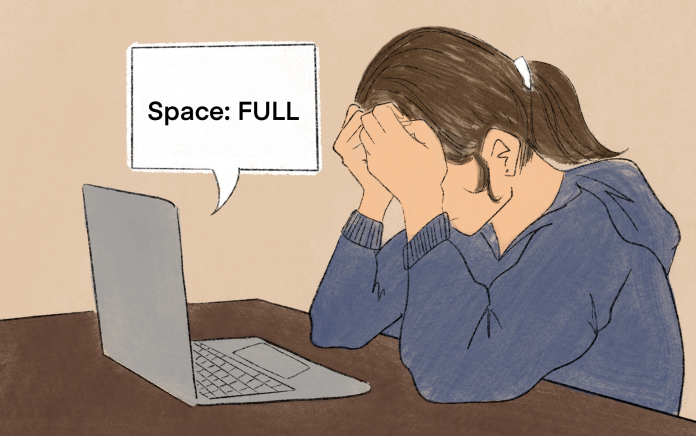Joe Zhao and Han Do
Contributing Writers
This fall quarter, many UC Santa Barbara (UCSB) students struggled to sign up for courses due to a school-wide course shortage that was said to be at “crisis-level” by Dean of Undergraduate Education Jeffrey Stopple. In a recent article from the Daily Nexus, given data shows that there were 8,163 fewer seats this fall quarter compared to last fall quarter in 2020.
In search of underlying reasons for the current course shortage, The Bottom Line reached out to Andrea Estrada, UCSB spokesperson and director of news and media relations.
She explained that the university faced pressure when switching back from remote instruction, including “a lot of retirements in the last year or so, reduced admissions in some graduate programs due to COVID-19 impacts, and budgetary constraints [that] may have reduced availability of TAs.”
On top of that, she continued, reduced capacity for the Education Abroad Program and UC Washington Center, which is part of the Capital Internship program, and the re-enrollment of students who deferred their studies during the pandemic contributed to the complication as well.
The course shortage was disastrous for first-years, especially international students who, along with later pass times, also faced the additional pressure of maintaining their visa status.
“Nearly all of my friends suffered from the course shortage,” said Sophia Wang, a first-year international student. “On the last day that we’re allowed to drop a course without fee, I got in the course [I wanted] but it was a really long wait.”
“I know it is the situation but it makes me disappointed. I think UCSB should give first-year students more instructions and priorities to select courses because we literally knew nothing until encountering the difficult problem,” Wang added with a sigh.
First-year students aren’t the only ones having a difficult time. Christian Park, a third-year biopsychology major, said that he had to start organic chemistry lab about one whole year after taking CHEM 109A. He had waitlisted for this particular course two times during winter and summer as well, but only got it the third time. He remarked how this time gap “makes things really tough” because it’s material learned one whole year ago.
Those who have been at UCSB for a while know this isn’t the first time students struggled with signing up for courses during the fall. According to Stopple, fall units have been on the decline “every fall since 2015,” the reasons for which include many factors, including the 2008 financial crisis and subsequent budget cuts.
According to former Vice Chancellor Jeffrey Stopple, fall units have been on the decline “every fall since 2015,”, the reasons for which include many factors, including the 2008 financial crisis and subsequent budget cuts.
Additionally, there are also challenges underlying the process of curriculum planning that each department goes through every year, as explained by Estrada.
“[Each department tries] to take into account the number of majors who need to fulfill requirements, the number of instructors they have available to them, and the pedagogical sequence of courses that their majors need to complete,” said Estrada. “The one variable that complicates this planning is that the number of students enrolling the following year and the majors that they intend to declare are often unknown and difficult to predict year-to-year.”
Besides long-range planning to address the most impacted majors, Estrada shared that some short-term changes are being implemented as well, which include “limiting the number of units in which students can enroll during a pass time, piloting an updated advising tool, and implementing an online catalog system that will give students themselves better tools to find courses of interest.”
Most recently, UCSB students have received an official email about changes to unit limits during pass times. Students are now only allowed 10 units during Pass 1, 15 units during Pass 2, and 21 units for Pass 3. This would put students two units short of getting a third class during Pass 1, and one unit short of getting a fourth class during Pass 2, meaning students would have to wait until Pass 2 to be in full-time status, a change that may end up worsening the situation.
The recent news has worried many students, such as one student who commented on a UCSB Reddit forum, “This is just going to make everything so much more stressful. If you’re worried about whether or not you can get enough units to be full time, now you have to live with that anxiety until Pass 2. If you need 16 units to be on track to graduate, now you need to stress about that until Pass 3.”
As for what to expect for winter quarter, Estrada suggests that students may still have to face similar challenges. She encourages students to not register for more classes than they need and to drop classes as soon as they decide not to take them, which would be helpful towards students on waitlists. Students should also “explore the full range of courses available in departments across the campus since this will enrich their education as well as provide more options for courses.”











